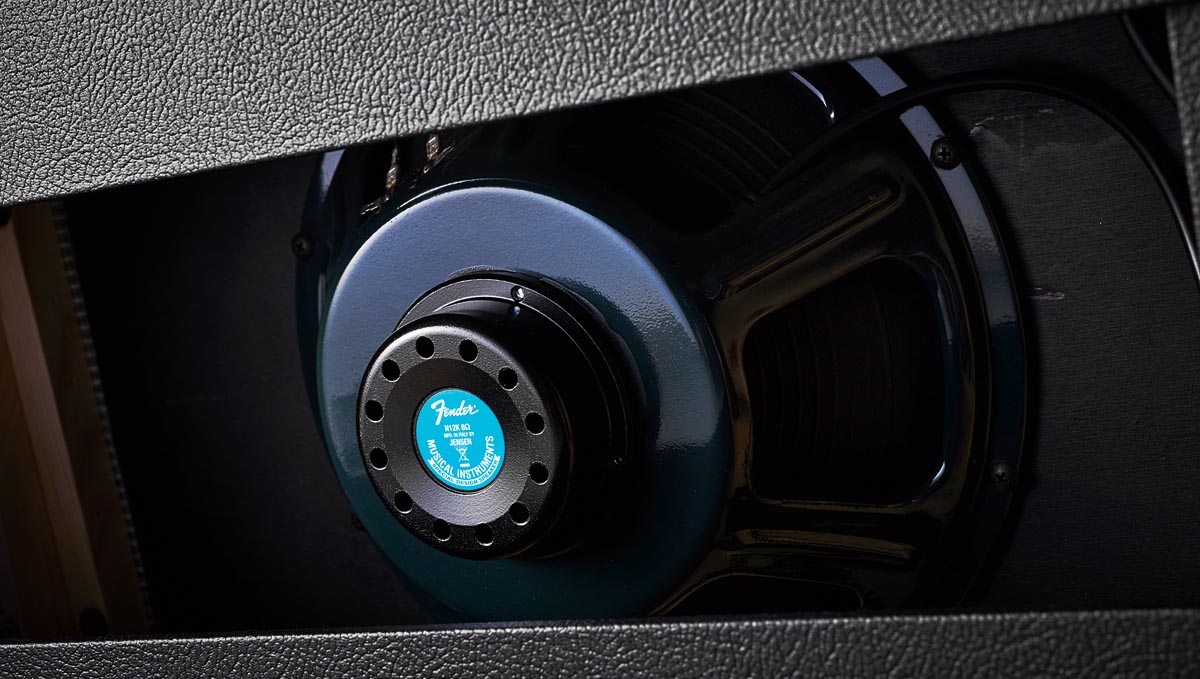How the advent of speakers using neodymium magnets enabled bigger sounds from lighter cabs
The neo kid in town revolutionized cab design, allowing smaller, lighter units to punch above their weight

Remember when we all had a full stack? A 100-watt head on top of two 4x12s, crammed on the stage of the Dog & Duck? When guitar amplification first started, achieving high-enough power and having speakers that could actually handle that power were the limiting factors.
All those extra speakers, larger chassis and bigger transformers came with a price – physical as well as monetary.
Regrettably, once higher powered guitar amps became available, lower powered amps were often associated with lower quality, probably due to their more affordable cost.
Although some of these attitudes still persist, in the early 2000s we started to see the growth in good-quality, low-powered amps, to the point where these days most amp manufacturers will have at least one high-quality amp producing up to around 15 to 20 watts.
Let’s face it, whether we play country, pop, rock or metal, there are now multiple small amps out there that sound great, don’t weigh much and are still loud enough for the sound guy to tell you to turn it down.

Rightly or wrongly, many focus more on their amp than their cab, and we’ve just halved the size and weight of our amps... so can we do the same with cabs? Yes, we can, but due to the laws of physics and personal tastes, there are limits.
Make a cab too small and you can lack the lower frequencies. A cab that’s too light can result in a reduced low-end and things can sound too ‘boxy’. A lot of us like to feel air hitting us when we play – it somehow feels more energetic and can give a certain kick on stage – so reducing the number or size of speakers isn’t always the answer, either.
All the latest guitar news, interviews, lessons, reviews, deals and more, direct to your inbox!

Porting a cab can get around some of these factors, helping to produce a large, full tone in a smaller box, but this option can often lack ambience – and if the science is followed too closely and the art of real speaker design is ignored, they can lack some musicality.
So if we’ve established that size is something that shouldn’t be messed with too much, and the weight of the materials used can result in too large a compromise considering the minimal weight saving, then we’re left with the speakers. Luckily, we have a perfect solution in neo speakers. Neo is an abbreviation of neodymium, a rare-earth element that can form an alloy with iron and boron to produce neodymium magnets.
Simply put – that big heavy thing on the back of a speaker/driver. The magnet, doesn’t need to be as big
As most people will find ‘the why’ a not very interesting read, I’ll skip to ‘the what’... and that is a very high magnetic field strength, or a stronger magnet or – more simply put – that big heavy thing on the back of a speaker/driver. The magnet, doesn’t need to be as big. In fact, it can be around a 10th of the size to produce the same effect.
Before you throw your device across the room shouting “Why didn’t anyone do this sooner?!” The answer is simple: they were only invented about 40 years ago, they were expensive and they were originally only available on licence.
As the price has come down, the viability of using them in guitar speakers has increased to the point where nearly all speaker manufacturers now produce at least one neo speaker, and they nearly all sound good to the point where we often use them for their tonal characteristics alone.
As of yet, the tonal palette probably isn’t as broad as what you’ll find with standard ceramic magnet speakers, but these are early days and comparing Celestions’ 4.7kg Vintage 30 to its 1.7kg Neo Creamback immediately shows a 3kg weight saving per speaker.
It’s true that not everyone wants their 2x12 to sound like a 4x12, and a lot of people love the sound of 1x12 cabs. When this is the case, the size of the speaker cabinet tends not to be a problem because there are plenty of compact options on the market that will add to the sound, rather than detract from it.
But when the ideal sounds are big, full tones, reminiscent of the full stack, we can’t just jump down to a tiny cab as we’ll often hear too much of a difference. In these cases, by using a lighter speaker instead of a smaller, lighter cab we’ll end up hearing less of a compromise.
